Standing on the porch at Oakmont Country Club, golfers have a chance to step back in time, enjoying nearly the same view as their ancestors did 113 years ago. There is nary a tree on the 7,300-yard, par-70 course, where the U.S. Open tees off this week. But it hasn't always been that way.
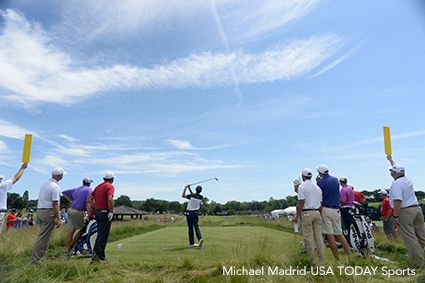
Among the many quirks of Oakmont is the tree program – which has sometimes meant planting trees and at other times culling them. But after the most recent cut-down, which took place in the 1990s, Oakmont is nearly back to the original course that designer Henry Clay Fownes intended.
"It's brought the wind back to the course and on sunny days, you can get a nasty (sun)burn," said Oakmont historian Gerry Hickel. "Some of the bigger trees were sopping a lot of the water and it was getting harder and harder to keep the greens in good condition. But the main reason was to get the course back to what it was like when it opened in 1903."
Widely regarded as the best U.S. Open course, Oakmont is hosting its record ninth national championship. The pros' last turn at this lush, tight, throwback course nestled in the hills north of Pittsburgh was in 2007, when Angel Cabrera walked away a winner – by shooting 5 over par.
The course, which Hickel says is Open-ready on just a few weeks' notice, is among the most historic courses in the U.S., and it's also full of quirks – from the vaunted "Church Pews" bunkers to the undulating fairways and the, ahem, 6-inch first cut.

"I've played Oakmont the last two days," Phil Mickelson said in a CBSSports.com story June 8. "And I really think it is the hardest golf course we've ever played. They don't know what the weather is going to be next week, if it's going to be dry or if it's going to be wet. So what they do is they let the rough grow long, and if it is wet, they'll leave it like that, and if it's dry they'll thin it out. So yesterday the rough was extremely long, I guess, and challenging.
"It's a very fair test, even though it's hard. But a lot of golf courses, when they challenge you tee to green the way Oakmont does, it usually has a little bit of a reprieve on the greens. You really don't at Oakmont. They're some of the most undulating, fast, difficult greens to putt. It really is the hardest golf course I think we've played."
All of which is just how Oakmont wants it.
"It's just a whole bunch of different things that make it difficult," said Hickel, who sits on Oakmont's Archives Committee and is the chairman of the Restoration Committee. "The USGA loves it, they consider it the gold standard of U.S. Open course. They've said it in the past, though they'll deny if, if there was a catastrophic event, they could play it here within two weeks."
Oakmont's quirks are many and varied – a river runs through it (and so does the Pennsylvania Turnpike), but there is no water; there are more than 200 sand traps; and there is nary a tree on the fairway.
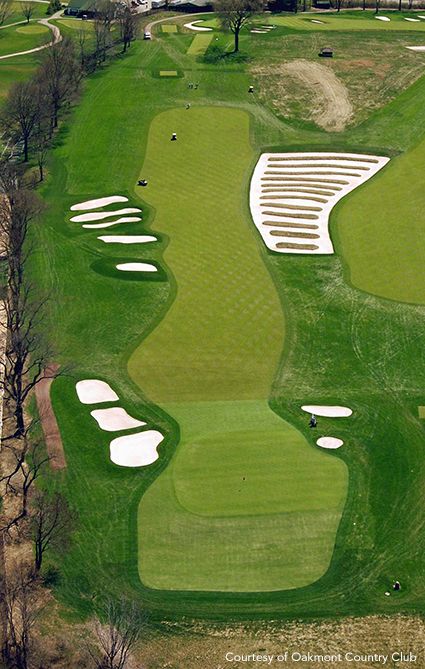
Water, Water … Nowhere:
Though Oakmont straddles the Allegheny River, there is not a single water hazard on the course, which in itself makes the course unique. And it might have made it easier, if Fownes had left well enough alone when the course was built. But with no water, the original course designer decided to add bunkers, and lots of them.
But for the first two years after the course was built, there was neither water nor sand (except on No. 2). Fownes, according to Hickel, wanted to see how the course played before adding bunkers right where they would cause the most trouble for golfers.
Church Pews And All That Sand:
The most famous of Oakmont's 200-plus sand traps are the vaunted "Church Pews," located between Nos. 3 and 4. Originally called "Snake Mounds," the Church Pews began as six individual bunkers and between 1930-34, the grass around the edges was removed, creating the narrow strips that exist now.
Hickel says the earliest reference to the term "Snake Mounds" appeared as a caption on a 1934 photo of a groundskeeper standing near the bunkers. The first reference of the phrase "Church Pews" appeared in a 1962 newspaper article and the term stuck.
As for the other hazards on the course, Hickel said they were originally filled with heavy river sand and rakes with extra-long tines furrowed the bunkers. As time wore on, the furrows were abandoned and the hazards are now filled with soft sand. Many of the bunkers, which were originally intended to be pot bunkers, are deep enough that you can't see out. "Big Mouth," the greenside bunker on No. 17 is particularly scary – "I'm six feet," Hickel said, "and when I stand in it, I am still 4-5 feet below the green."
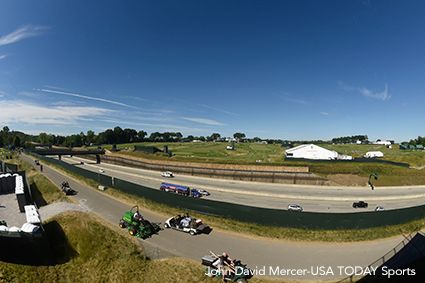
What's with the highway?
The Pennsylvania Turnpike cuts right through the middle of Oakmont, separating Nos. 2-8 from the rest of the course. But it's not as bad as it sounds. Originally, the course was built on either side of train tracks and a single bridge was built for golfers to cross from one side of the course to the other. In the 1950s, the Pennsylvania Turnpike was being built and the original cut for the train tracks was widened to accommodate two lanes of traffic on each side of a median.
Though the road itself is about 50 feet below the course, Hickel said the No. 8 green and No. 9 tee box were moved. Golfers can see straight down to the roadway and, Hickel says, there are a couple of "unsightly signs for service crews," but otherwise, the turnpike had little effect. Originally, there was one bridge connecting both sides of the course, but after the 1994 U.S. Open, a second, larger bridge was built to accommodate the foot traffic.
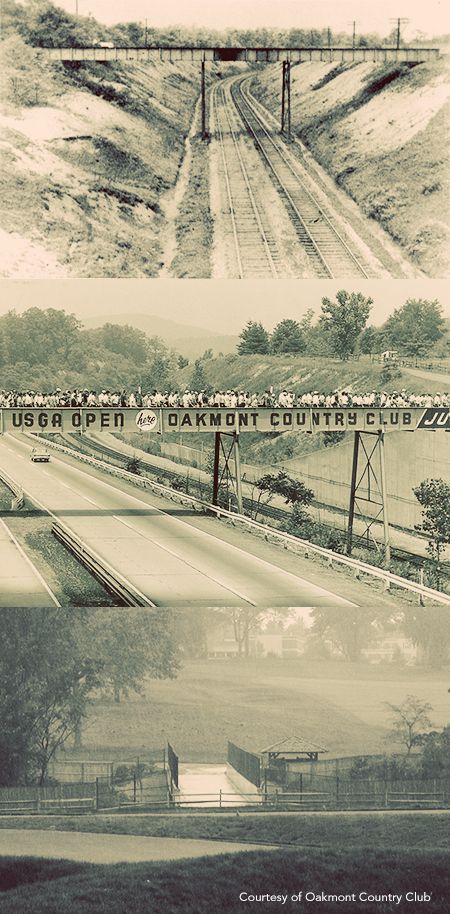
Bye-Bye, Trees:
Fownes originally selected the site for Oakmont because it was farmland with no trees. He intended the property to be a links course, but drainage kept Fownes from creating true pot bunkers. Nearly 50 years after the course was built, a golf writer referred to Oakmont as "an ugly brute," so the club decided to add hundreds of trees to narrow the fairways and make it more challenging.
When Hickel first played Oakmont in 1978, he said, "it looked like a regular parkland course. I remember I'd get into a bunker and couldn't get out because of a tree limb. So I'd get snookered getting into the bunker and double snookered trying to get out!"
About 20 years later, in an effort to return Oakmont to its original glory, the club membership embarked on a project to remove all the trees.
Greens Are Tougher Than They Look:
Mickelson isn't wrong about Oakmont's greens. Before you even get onto the green, the rough can be quite a challenge. Hickel says the average golfer can't reach the green with a second shot, so it's likely he'll have to whack it out of the rough and up to the green ... where the ball won't hold. The greens, which play firm and true, were the inspiration for the stimpmeter, which measures how fast a green is. Oakmont traditionally runs between 12.5-13.5 on the stimpmeter (an average tour course would read about 10). Many of the greens are canted or have valleys and all of them require golfers to leave their shots below the hole or risk a ballooning score. But it is the speed that truly defines Oakmont's greens.
"If Oakmont has a signature, it has to be these lightning fast greens," USGA Executive Director Mike Davis told Forbes magazine in April. "And this isn't a recent phenomenon. These greens have been like this really from day one. In fact if you go back the 1935 U.S. Open that was played here, the players were complaining incessantly about the greens being too fast. That was 1935. In fact some of them almost boycotted and didn't want to play."
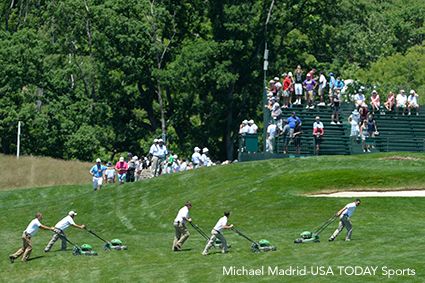
But of course, they did.
U.S. Open Winners At Oakmont
1927 – Tommy Armour
1935 – Sam Parks, Jr.
1953 – Ben Hogan
1962 – Jack Nicklaus
1973 – Johnny Miller
1983 – Larry Nelson
1994 – Ernie Els
2007 – Angel Cabrera
Popular On ThePostGame:
-- 10 Toughest Venues In Sports
-- College Football Fan Bases Most Obsessed With Their Rival
-- Sports Stars On 'Curb Your Enthusiasm'





